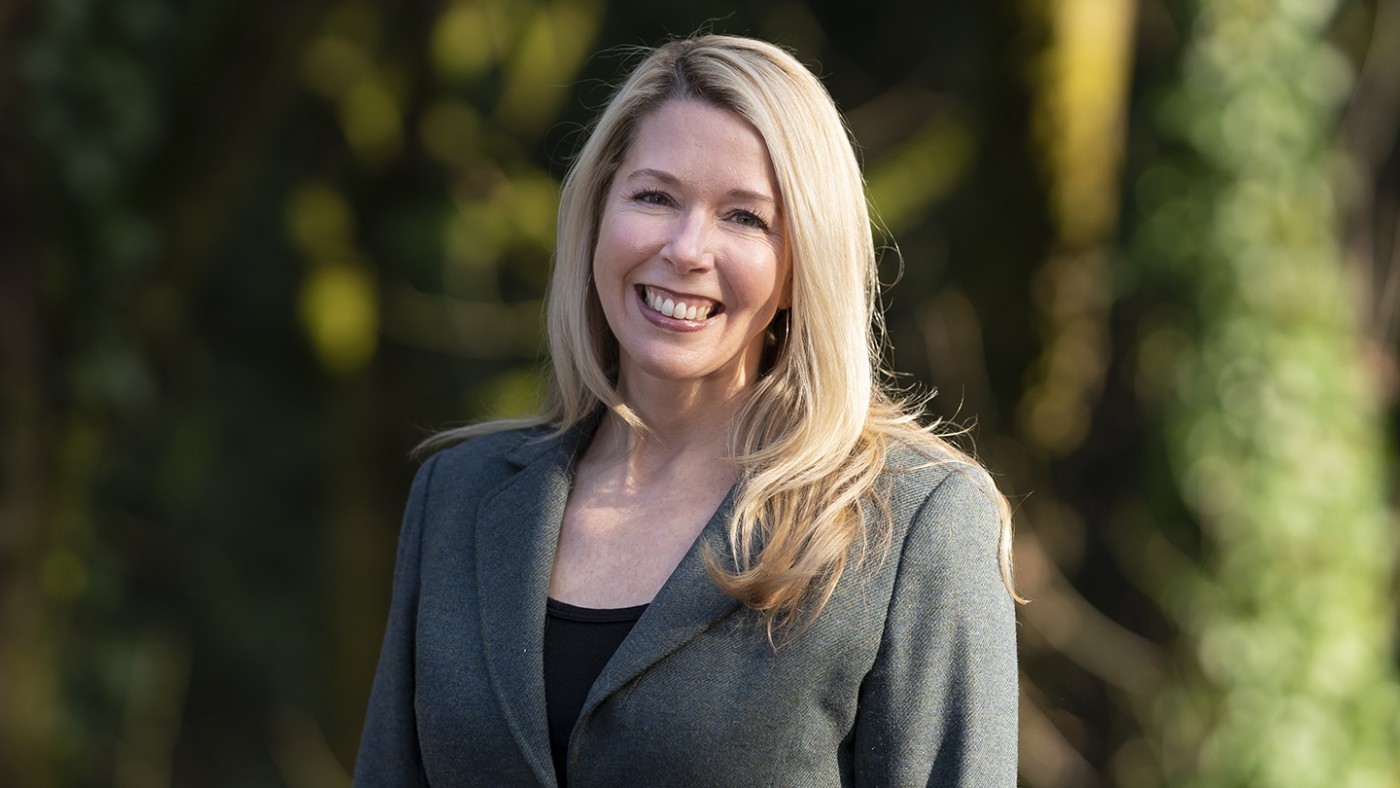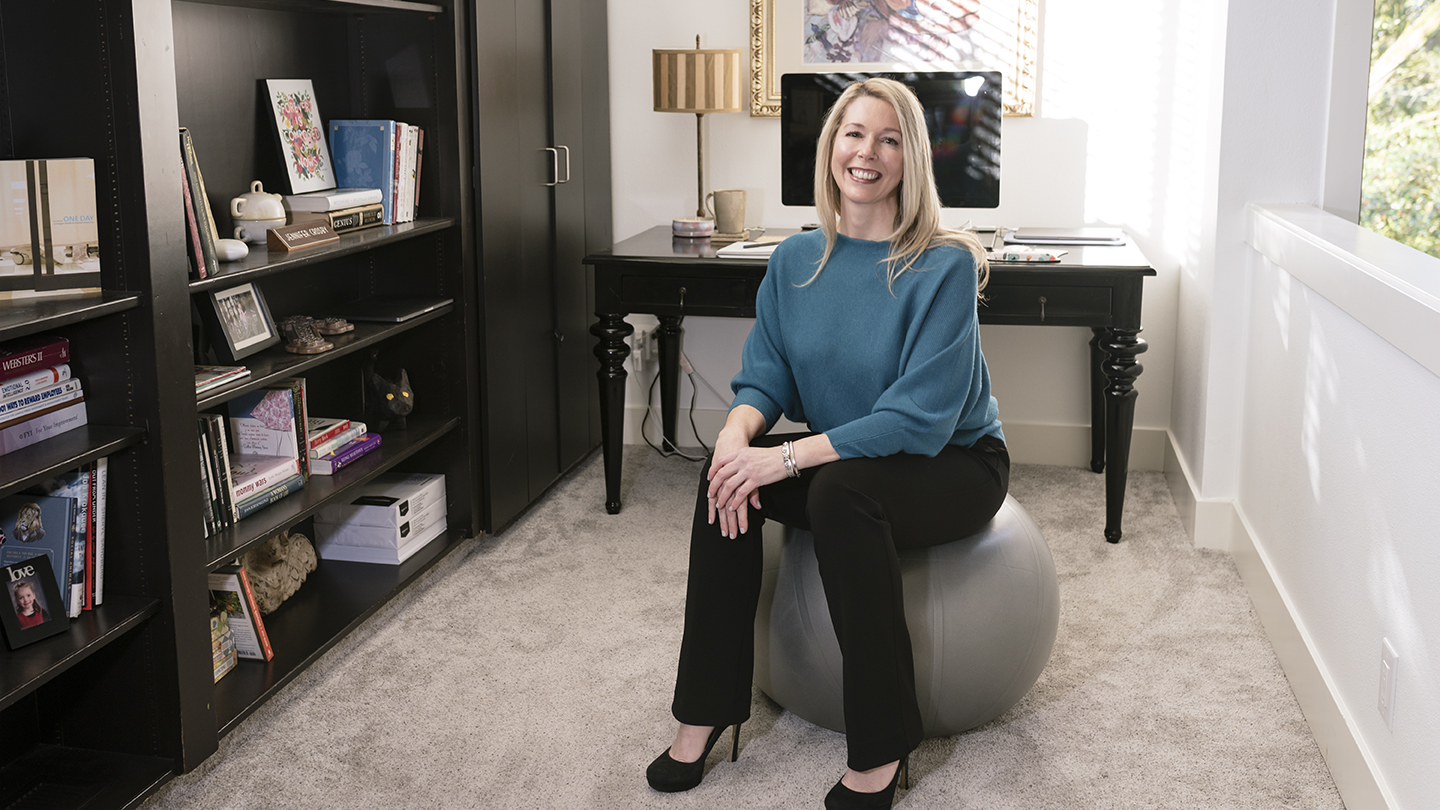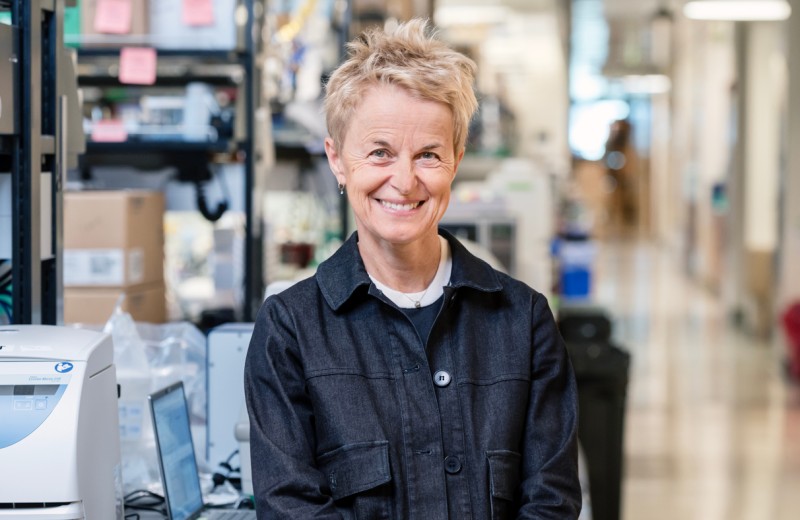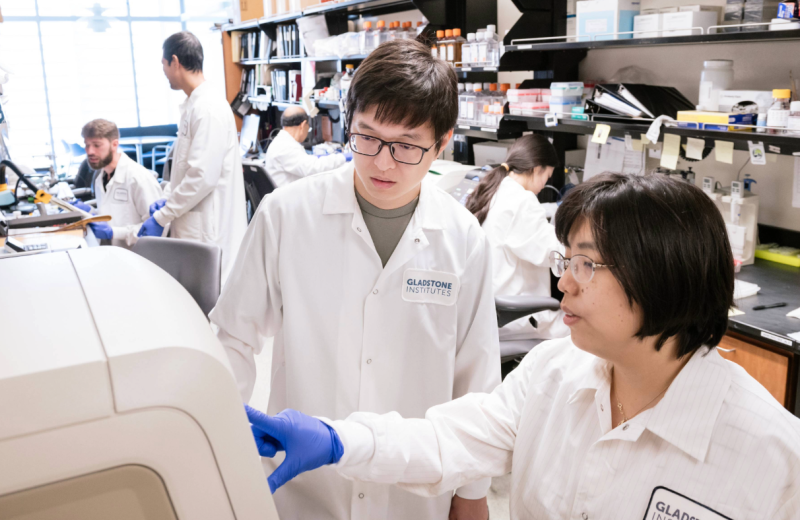Gladstone NOW: The Campaign Join Us on the Journey✕

Jennifer Crosby, the new vice president of human resources, joins Gladstone’s leadership team with over 25 years of experience in human resources, employee and labor relations, and academic affairs.
What creates an excellent workplace? That’s the question that drives Jennifer Crosby, the new vice president of human resources at Gladstone Institutes.
“I get very excited when talking about workplace culture, because organizations always evolve,” says Crosby. “As our workplaces are joined by different generations, as they become more international, as we really start to focus on recruiting individuals from diverse backgrounds—all these things make a workplace environment fluid, and we need to constantly adapt to ensure we’re meeting the needs of our community members.”
Crosby joins Gladstone’s leadership team with over 25 years of experience in human resources, employee and labor relations, and academic affairs. Most recently, she was vice president of philanthropy and community engagement at Scripps Research, where she also served as vice president of people services and helped guide the organization in culture-related matters during a time of institute-wide transformation.
In her new role at Gladstone, Crosby will provide strategic insights and guidance for recruitment, employee engagement and retention, benefit programs, compensation management, professional development, and training, while also keeping diversity, equity, and inclusion at the forefront of human resources policies and procedures.
“We’re delighted to have Jennifer on board,” says Gladstone President Deepak Srivastava, MD. “With her broad expertise, she will help us evolve the most nurturing and supportive environment for our people, thereby enabling them to collectively contribute to the most impactful scientific output.”
From Hospitality to Research
Originally from Astoria, Oregon—where the movie Goonies was filmed, as she enjoys mentioning—Crosby has worked in human resources since graduating from the University of Oregon in 1995.
After a career that spanned hospitality, environmental engineering, natural foods, and the energy sector, Crosby became the senior human resources business partner of research at the Oregon Health & Science University (OHSU) in 2005.
“When I started working with the research community, I knew I had found my people,” says Crosby. “I love to talk about science and big ideas, and to explore the ‘what ifs.’”
By the time she left OHSU in 2016, Crosby oversaw a constituency of 2,600 employees as the director of human resources for research and academics, and the director of the office of international affairs. She then took the position of vice president of people services at Scripps Research, managing international services, human resources, postdoctoral affairs, and the counseling office at the organization’s two campuses in California and Florida.
Crosby’s latest position at Scripps Research was in philanthropy and community engagement. Now, with her move to Gladstone, she embraces a return to her passion for human resources and internal operations.
“After I met with the people at Gladstone, it just felt like I would be going home,” she says. “It was comforting to know that I was speaking the language, and also inspiring to see Deepak’s leadership style and his enthusiasm for evolution, for moving into the future while also honoring the past. That really resonates with me.”
A Refreshing Approach to Human Resources
While dealing with serious issues on a daily basis, Crosby knows that the levity in her approach and communication style can seem unusual in human resources. But, in her opinion, it’s the key to her success.
“I don’t put up roadblocks, which is what many people expect if they have experienced very strict or stringent human resources approaches in the past.” she says. “I may sometimes slow down to make sure we’re doing things legally and excellently, but I always try to find a pathway that enables us to achieve our goals. Ultimately, I’m not making decisions just based on traditional human resources practices, but on how they affect our entire community.”

Crosby brings levity to her approach when dealing with serious issues on a daily basis.
For her first 90 days, Crosby is doing a thorough and thoughtful analysis of Gladstone—the human resources programs, the employee experience, and the culture overall.
“I want to poke at things and ask lots of questions, and identify areas where we can improve,” she says. “I look forward to modernizing certain systems and policies, and implementing many of the tactics laid out in Gladstone’s strategic plan, which was clearly a labor of love.”
She will also collaborate with her colleagues across the organization to help improve diversity, equity, and inclusion (DEI)—topics of high priority at Gladstone—specifically as they relate to recruitment, retention, and training. In fact, Crosby has experience in this area dating back to her days at OHSU, where she was part of the diversity action plan committee. At Scripps Research, she also co-led a bicoastal committee on gender parity.
“My philosophy on diversity is that it has to be part of the fabric of an organization,” she says. “It’s not a checkbox. It’s not something that you do and then say, ‘Okay, we’re done with diversity.’ It needs to be a fundamental part of who we are as an institution, and always considered in our organizational decision-making.”
One of her first actions will be to hire a new director of DEI to champion the importance and value of a diverse and inclusive environment. And then, work closely with that person to bolster Gladstone’s culture through creative DEI initiatives.
“All roads in human resources lead back to the workplace environment,” says Crosby. “I think some organizations go stale because they forget to constantly look at the makeup of the people and what engages them. We should be asking, ‘What gets them excited and makes them want to come to work every day?’”
“The thing is, the answer to those questions changes constantly,” she adds. “So we need to remain creative, open, and flexible to meet the needs of our people so they in turn can do their best work. That is definitely what motivates me to come into work every day!”
For Media
Julie Langelier
Associate Director, Communications
415.734.5000
Email
About Gladstone Institutes
Gladstone Institutes is an independent, nonprofit life science research organization that uses visionary science and technology to overcome disease. Established in 1979, it is located in the epicenter of biomedical and technological innovation, in the Mission Bay neighborhood of San Francisco. Gladstone has created a research model that disrupts how science is done, funds big ideas, and attracts the brightest minds.
About Jennifer Crosby
Jennifer Crosby is the vice president of human resources at Gladstone Institutes. She has over 25 years of experience in human resources, employee and labor relations, and academic affairs. Prior to joining Gladstone, Crosby was vice president of philanthropy and community engagement at Scripps Research, where she also served as vice president of people services and helped guide the organization in culture-related matters during a time of institute-wide transformation.
From 2005 to 2016, she worked at the Oregon Health & Science University in several positions, including director of human resources for research and academics for which she oversaw a constituency of 2,600 employees. Crosby earned a bachelor of arts in sociology from the University of Oregon. She is a member of the HR Branch of the College and University Professional Association, the Society for Human Resource Management, the Association of Fundraising Professionals, and the Council of Advancement and Support of Education.
Want to Join the Team?
Our people are our most important asset. We offer a wide array of career opportunities both in our administrative offices and in our labs.
Explore CareersBeyond Viruses: Expanding the Fight Against Infectious Diseases
Beyond Viruses: Expanding the Fight Against Infectious Diseases
The newly renamed Gladstone Infectious Disease Institute broadens its mission to address global health threats ranging from antibiotic resistance to infections that cause chronic diseases.
Institutional News News Release Cancer COVID-19 Hepatitis C HIV/AIDS Zika Virus Infectious DiseaseFueling Discovery at the Frontiers of Neuroscience: The NOMIS-Gladstone Fellowship Program
Fueling Discovery at the Frontiers of Neuroscience: The NOMIS-Gladstone Fellowship Program
The NOMIS-Gladstone Fellowship Program empowers early-career scientists to push the boundaries of neuroscience and unlock the brain’s deepest mysteries.
Institutional News Neurological Disease Mucke Lab NOMISGladstone Mourns the Loss of Founding Trustee Richard D. Jones
Gladstone Mourns the Loss of Founding Trustee Richard D. Jones
Jones lent Gladstone his time and expertise for nearly 50 years.
History Institutional News



